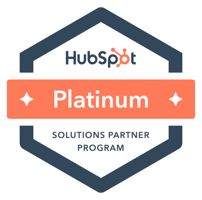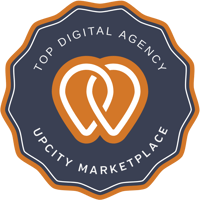Some businesses try to build a framework around consumption metrics (e.g., how many of your reps took a certain course, when they obtained their certification, etc.). However, it may be better to focus on an outcome-based sales enablement framework. In other words, determining whether your sales enablement process is contributing toward the desired business outcome. After all, the whole point of sales enablement is to drive tangible outcomes. Like more reps meeting their quotas, and more sales being closed.
In the information below, we'll discuss 4 steps to developing a simple, outcome-based sales enablement framework. If you follow these steps, you'll likely be able to build a framework that's flexible, measurable, as well as highly impactful (in a good way) on your sales team's performance.

4 Steps to Developing a Sales Enablement Framework
1. Define Your Goals
First of all, you need to clearly identify what you want your sales enablement program to achieve. Your goal (or goals) should be SMART — specific, measurable, attainable, relevant, and time-bound. Without a clear "destination" in mind, you can't expect your sales enablement journey to be successful.
For example, your primary sales enablement objective may be to achieve a 15% uplift in sales within the next 6 months. That checks all the boxes in terms of being a SMART goal. This can give your framework-building efforts a definite focus.
2. Identify Your Progress Markers
The primary goals of your sales enablement program tend to be "high-level" — in other words, strategic in nature. That means they usually can't be achieved overnight. Instead, you must set up smaller milestones, or progress markers, that contribute toward the larger objective. Think of these markers as the short-term "tactics" needed to make your overall strategy successful.
For example, how can you reach your goal of a 15% sales uplift within 6 months? Perhaps each sales rep on your team needs to do one (or more) of the following:
- Upsell to 5 more customers per week
- Close 3% more deals per month
- Follow-up on 50 more leads than the previous 6 months
- Etc.
Now you have smaller, more granular goals that your team can focus on. Goals that are easier to achieve, but are still crucial in terms of reaching your main objective. Moreover, progress markers like the ones mentioned above are generally easy to measure. This means you'll be able to quickly discern whether your sales enablement process is "moving the needle" as you want it to.

3. Develop Your Sales Enablement Program
Now that your primary objective is in place, and you've set up several markers to track progress toward that goal, it's time to start building your sales enablement process.
Of course, there are a lot of moving parts with any robust sales enablement program. You need to have content that your prospects find valuable and engaging readily available to your reps. You need to ensure that your sales enablement tools are streamlining the sales process, instead of adding to your reps' workload. In addition, you need to keep marketing and sales aligned on all major objectives.
Besides all of those components, your training program has to be effective in terms of concrete, measurable results. It's not enough to define your learning and development efforts by how many agents complete them. Efficacy in the field should be your main concern. In other words: is your sales enablement training program driving results in the real world?
You can measure your training program's success by whether each participant is consistently hitting those progress markers set up in step #2. And from a development perspective, you can also design your training program to target those specific areas of opportunity. For instance, you can have your reps run through a training module on upselling:
- First, they listen to a poor upselling interaction, followed by a great one, and then compare the two.
- Next, they role-play with a manager, or with one another, and practice their upselling skills that way.
- The loop closes with their manager listening to certain upselling interactions. Providing commendation and constructive feedback, and having them take a refresher course if needed.
4. Review and Adjust
Once you've gone through the three steps discussed above, it's time to review your reps' performance and measure the success of your sales enablement program. In order to do this, you'll need to answer a few key questions:
- Did our reps complete the training provided?
- Were they able to reach the progress markers we established?
- Does it look like we're going to achieve (or have we already achieved) our primary goal?
Each one of these questions is important in terms of your sales enablement framework. Why?
Because the answer to each question will tell you a lot about how effective your process actually is. For instance:
- If your reps didn't complete their training but still hit all of their milestones, then your program isn't effective (since they didn't need it anyway).
- If your reps did complete their training but weren't able to reach their progress markers, then you probably need to rework your modules (since the training didn't help your team like you were hoping it would).
- When your reps completed their training and hit all of their milestones, but you still aren't going to achieve your main objective, then you need to pivot your sales enablement process toward a different direction (since it wasn't relevant to your ultimate goal).
Of course, if you can answer Yes to all three questions above, then you can give yourself a pat on the back and move on to your next high-level objective. Your sales enablement program is doing what it's supposed to do!
Take advantage of our free Hubspot CRM Configuration to start modernizing your sales process. This is a limited-time offer where we will design a sales pipeline specifically for your business. Start generating more revenue and improve your close rates by building your first high-performing sales pipeline on HubSpot at no cost. Simply schedule a discovery session with our team of HubSpot experts.
If you have any questions about how to implement these 4 steps in your sales enablement framework, reach out to our team at OverGo Studio for a free consultation today. We can help you to establish that simple, flexible, yet robust framework that you need in order to meet all of your sales enablement goals.


